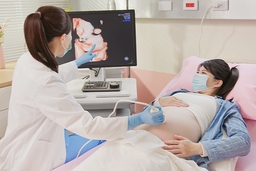Understanding Cervical Cancer and Its Prevention

Ria Irawan, one of Indonesia's leading senior actresses, died of cervical cancer in 2020. The cancer spread from her cervix to the lymph nodes, endometrium, lungs, and head. Ria's body eventually gave up, but she never seemed to complain or give up in her struggle. What exactly is cervical cancer? Let's learn!
Cervical cancer occurs when cancer begins in the cervix. The cervix is located between the vagina (birth canal) and the end of the uterus (womb). Even if cancer spreads or metastasizes to other parts of the body, it is still referred to as cervical cancer if it begins in the cervix.
Because it is specific, anyone with a cervix is at risk of developing cervical cancer.

The risk rises after the age of 30. Furthermore, those who are sexually active, have multiple partners, do not use precautions (such as condoms), and have hereditary factors are at a higher risk.
Prolonged infection with a specific type of HPV, the human papillomavirus, is the main cause of cervical cancer. The virus itself is widespread among sexual partners. HPV infection can result in a variety of STDs and cancer.
HPV infection
HPV is a virus that commonly infects both women and men's reproductive tracts. Types 16 and 18 of the HPV cause approximately 50% of the growth of cervical precancerous cells. Nonetheless, cervical cancer takes 15–20 years to develop in women with normal immune systems.
HPV infection can begin with skin-to-genital contact, contact with mucous membranes, or contact between body fluids, most commonly during sexual intercourse, including oral sex. HPV carriers pass it on to healthy sexual partners.
About 70–90% of HPV infections are asymptomatic and heal on their own within 1–2 years. However, you must be cautious if the infection causes precancerous lesions. Screening is the only way to find out! If the lesion is not detected and treated promptly, an invasive carcinoma at the site of infection will develop. It's only a matter of time before the cancer grows and spreads.
Cervical cancer
Almost all cases of cervical cancer are linked to HPV infection. Nonetheless, not all HPV infections result in cervical cancer.
An HPV infection must first cause precancerous lesions to progress to cervical cancer. Precancerous lesions, if not detected and treated, will progress to invasive carcinomas, or cancer cells that are more extensive and ready to spread. This process typically takes 15–20 years.
The causes of lesions transforming into carcinomas are unknown, but factors such as HPV type, immune status, co-infection with other types of STDs (such as herpes and chlamydia), first pregnancy at a young age, use of hormonal contraception, and smoking habits are thought to be triggers.
Cervical cancer usually has no symptoms in its early stages. However, in the advanced stages, symptoms may include:
- Vaginal bleeding after sexual activity, between menstrual periods, or after menopause.
- Watery, bloody, heavy, and foul-smelling leucorrhoea.
- Pelvic pain or discomfort during intercourse.
If you experience any of the above symptoms, see a doctor right away!
Preventing cervical cancer

Cervical cancer is highly preventable. In addition to screening, HPV vaccination is required to protect children from an early age. This vaccine is safe for children as young as nine years old. The government has also provided free HPV vaccines to girls in grades 5 and 6.
The HPV vaccine must be administered before a person becomes sexually active, or before they are exposed to HPV. Because this vaccine contains no live biological products or viral DNA, it is not contagious. In some ways, this vaccine can function effectively despite the absence of antibiotics or preservatives.
The bivalent HPV vaccine contains VLP, a virus-like protein that can fight high-risk HPV types 16 and 18. The nonavalent type vaccine contains VLP against types 31, 33, 45, 52, and 58. The quadrivalent and nonavalent vaccines contain VLP, which protects against genital warts, a disease caused by HPV types 6 and 11.
Children aged 11 to 12 years must receive two doses of the HPV vaccine. The second dose of the vaccine is administered 6 to 12 months after the first dose. If the vaccine is started at or after the age of 15, the child will need three doses spread out over six months.
HPV vaccination must be completed before the age of 26. Vaccination is not recommended for people aged 27 to 45, or for those who are sexually active, because vaccines for this age group are less effective. We strongly advise further medical consultation because preventive measures against new HPV infections are still required.
Get the HPV vaccine package at our clinic.
HPV vaccination, like immunizations or other treatments, can cause side effects. Among these are:
- Injection site pain, redness, or swelling.
- Feeling dizzy or fainting. Adults are more prone to post-vaccination fainting, including HPV vaccination.
- Nausea or sickness.
- Headache.
If you are a woman aged 21–65 and sexually active, we recommend having a Pap smear once a year. If an infection is detected, consult a doctor immediately. Someone who has an HPV infection along with HIV will experience the development of a relatively faster and more difficult-to-control HPV infection. Be careful!
Cervical cancer is entirely avoidable. Complete the HPV vaccination as soon as possible. Maintain the cleanliness of your genitals. Then, always prioritize safe and trustworthy sexual relationships.



